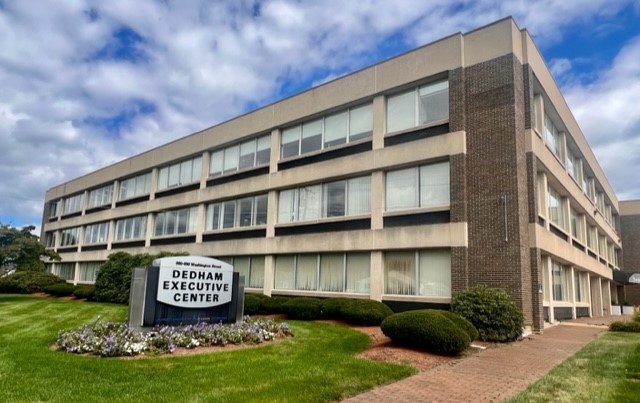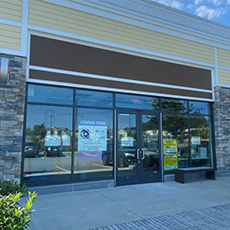Lexington Eye Associates, Inc. and the American Academy of Ophthalmology urge the public to get the facts on
the most common cause of blindness
Lexington, MA – February 1, 2020 — Age-related
Macular Degeneration (AMD) is
one of the leading causes of blindness over age 50, affecting about 2.1 million people nationwide.
Early diagnosis and treatment are the keys to preventing vision loss. During February, Lexington Eye Associates, Inc. joins the American Academy of Ophthalmology in educating the public about the facts on AMD.
AMD is a
degenerative disease that happens when part of the retina called the macula is damaged. It’s the part of the eye that delivers sharp, central vision needed
to see objects straight ahead. Over time, the loss of central vision can
interfere with everyday activities, such as the ability to drive, read, and see
faces clearly.
Ophthalmologists
– physicians who specialize in medical and surgical eye care – have more tools
than ever before to diagnose the disease earlier, and to treat it
better. But these advances cannot help patients whose disease is
undiagnosed, or patients who are unaware of the seriousness of their disease.
People’s lack of understanding about AMD is a real danger to public health. A
recent study showed that most people with AMD don’t realize it’s a
chronic health issue that requires regular attention for the rest of their
lives.
The Academy
offers these seven steps to help people take control of their eye health:
- Get regular
comprehensive medical eye exams. AMD often has
no early warning signs, so getting regular comprehensive
eye exams from an
ophthalmologist is critical to diagnosing and treating the eye disease in its early
stages. The
Academy recommends that adults with no signs or risk factors for eye disease
get a baseline eye disease screening at age 40 — the time when early signs of
disease and changes in vision may start to occur. By age 65, the Academy
recommends getting an exam every one to two years, even in the
absence of symptoms or eye problems.
- Quit smoking. Numerous studies show smoking increases the risk of developing AMD, and the speed at which
it progresses. Smokers are twice as likely to develop macular degeneration
compared with a nonsmoker.
- Eat a well-balanced diet. Many studies demonstrate that eating a diet rich in fruits, vegetables, and nutrient-packed foods, such as salmon and nuts, may reduce the risk of AMD. Research also suggests that patients who ate fresh fish, an important source of omega-3s, were at lower risk of developing AMD.
- Take the right kind of vitamins. Vitamins can delay the progression of advanced AMD and help people keep their vision longer if they have intermediate AMD or advanced AMD in one eye. But make sure it’s the right combination of vitamins. A recent study found that some of the top-selling products do not contain identical ingredient dosages to eye vitamin formulas proven effective in clinical trials.
- Exercise regularly. Exercising three times a week can reduce the risk of developing wet AMD by 70 percent. Studies also show that physical activity may lower the odds of both early and late stages of AMD.
- Monitor your sight with an Amsler Grid. This simple, daily routine takes less than one minute and can help people with AMD save more of their vision. Using this grid is essential to finding any vision changes that are not obvious, so you can report them to your ophthalmologist.
- Know your family’s eye health history. If you have a close relative with AMD, you have a 50 percent greater chance of developing the condition. Before your next eye exam, speak with your family about their eye health history. You may need more frequent eye exams based on your family history.
“Most people understand the importance of annual medical examinations,” said Rahul N. Khurana, M.D., a clinical spokesperson for the American Academy of Ophthalmology. “However, we often forget that our eyes also need regular evaluation by a medical doctor. Degenerative diseases, such as AMD, can now be successfully treated, but early detection is imperative to avoid lasting consequences.”
EyeCare America® Helps Save Seniors’ Sight
As seniors age, many will develop eye diseases that can become
debilitating if not treated in time, such as AMD. The American Academy of
Ophthalmology’s EyeCare America® program may be able to help. This
year-round program is designed for seniors, age 65 and older, who have not seen
an ophthalmologist in three or more years. Through EyeCare America, seniors may
receive a free medical eye examination by ophthalmologists across the country
who volunteer their time and services. To see if you or a loved one is
eligible, visit eyecareamerica.org.
This program is co-sponsored by the
Knights Templar Eye Foundation Inc., with additional support provided by Alcon,
Genentech, and Regeneron. As one of the largest public service programs in
American medicine, EyeCare America was recognized in 2015 by the President’s
Volunteer Service Award, which is the premier volunteer awards program in the
United States.
For more information on age-related macular degeneration or other eye
conditions and diseases, visit the American Academy of Ophthalmology’s EyeSmart® website.
About the American Academy of Ophthalmology
The American Academy of Ophthalmology is the world’s largest association of eye physicians and surgeons. A global community of 32,000 medical doctors, we protect sight and empower lives by setting the standards for ophthalmic education and advocating for our patients and the public. We innovate to advance our profession and to ensure the delivery of the highest-quality eye care. Our EyeSmart® program provides the public with the most trusted information about eye health. For more information, visit aao.org.
News Release
Contact:
Angela Casazza, MHA, PMP
contact@lexeye.com













